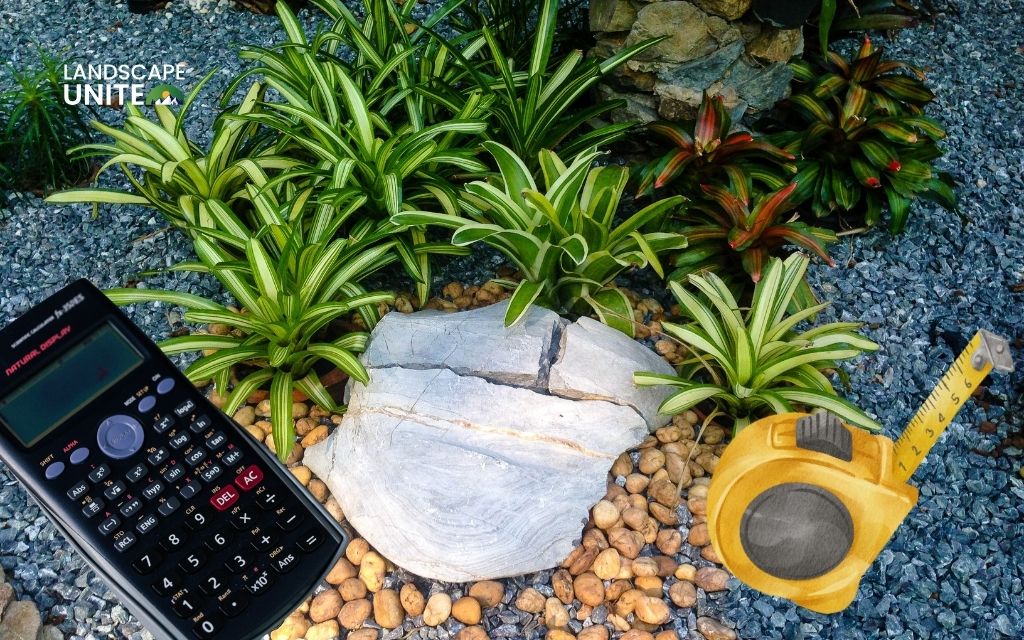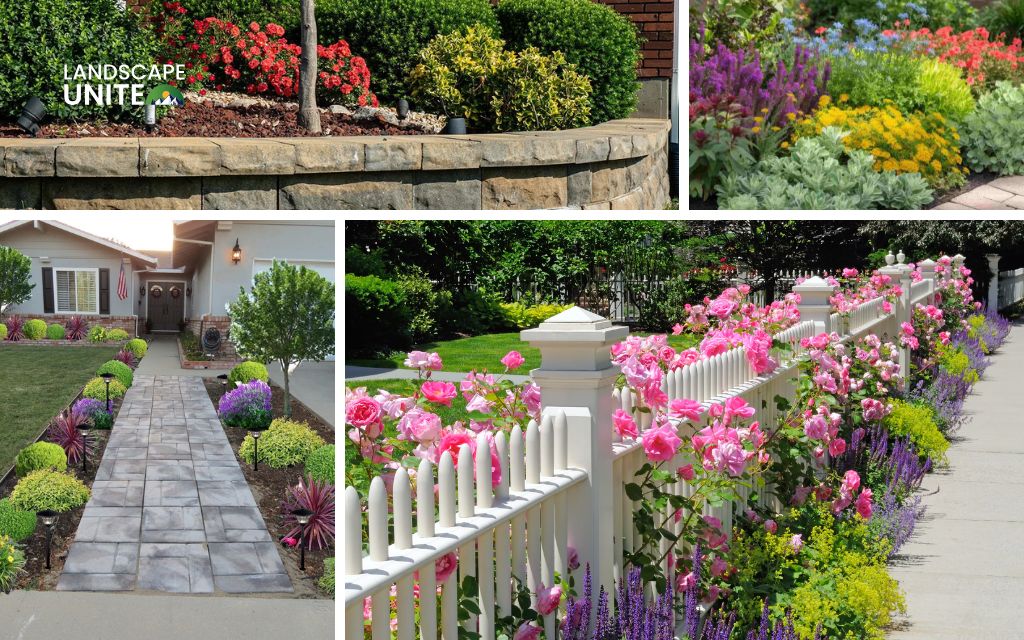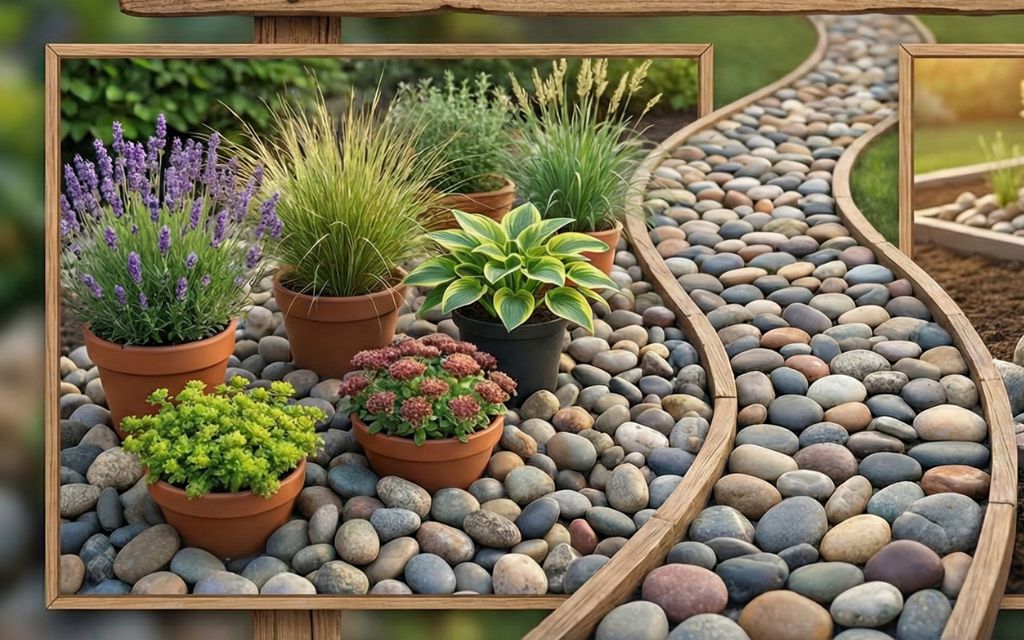Creating your first flower bed doesn’t have to feel overwhelming. Whether you want to add curb appeal to your front yard or create a stunning backyard retreat, learning how to make a flower bed is easier than you think. This comprehensive guide walks you through every step, from choosing the perfect location to maintaining beautiful blooms year-round.
A well-designed flower bed brings numerous benefits to your property. It increases home value, supports local pollinators like bees and butterflies, and can even reduce water usage when planted with drought-tolerant species. Plus, there’s nothing quite like stepping outside to enjoy flowers you planted yourself.
Why every homeowner should know how to create a flower bed
Building your own flower bed gives you complete control over design, plant selection, and maintenance costs. You can customize everything from size and shape to bloom colors and seasonal interest. Most importantly, you’ll develop gardening skills that last a lifetime.
Ready to transform that empty patch of lawn into something spectacular? Let’s dive into the seven essential steps.
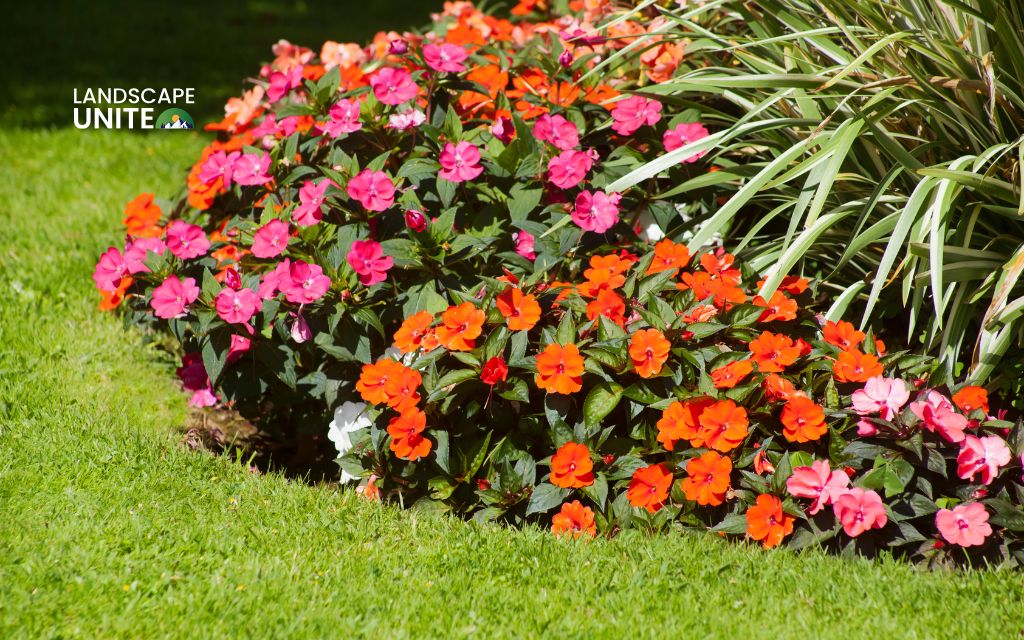
Step 1: Choose the perfect location for your flower bed
Before you start digging, spend time observing your yard throughout the day. Most flowering plants need at least 6 hours of direct sunlight, so identifying sunny spots is crucial when learning how to build a flower bed.
Consider these key factors:
- Sunlight exposure: Walk around your property at different times of day. Notice which areas get morning sun, afternoon shade, or full sun all day. This information determines which plants will thrive.
- Drainage and slope: Avoid low spots where water pools after rain. Flowers need well-draining soil to prevent root rot. Gentle slopes actually work well for flower beds.
- Wind patterns: Strong winds can damage delicate blooms and dry out soil quickly. Look for areas with some natural wind protection.
- Visibility: Choose a spot where you’ll see and enjoy your flowers daily. Front yard flower beds create instant curb appeal, while backyard beds offer private enjoyment.
- Proximity to water: Consider how you’ll water your flower bed. Being close to a spigot or having sprinkler access makes maintenance much easier.
Step 2: Plan your flower bed design
Smart design makes the difference between a flower bed that looks professional and one that appears haphazard. When you’re figuring out how to design a flower bed, start with these proven principles.
Size and shape considerations:
- Keep beds 3-4 feet deep maximum for easy maintenance
- Curved edges look more natural than straight lines
- Start small and expand later as your confidence grows
- Rectangular raised beds work well for beginners
Design layout tips:
- Sketch your ideas on paper first
- Use garden planning apps for visual planning
- Consider seasonal bloom times for continuous color
- Plan pathways for maintenance access
Irrigation planning: Decide early whether you’ll use drip irrigation, soaker hoses, or hand watering. This affects your bed layout and plant spacing.
Step 3: Prepare the ground properly
Ground preparation determines your flower bed’s long-term success. This step requires the most physical effort, but it’s absolutely essential when learning how to start a flower bed.
Removing existing vegetation:
- Manual removal: Use a spade to cut and remove grass chunks
- Sheet mulching: Layer cardboard over grass, then add soil on top
- Solarization: Cover area with clear plastic for 6-8 weeks in summer heat
Soil assessment and improvement: Test your existing soil by digging a small hole. Is it clay, sandy, or somewhere in between? Clay soil holds too much water, while sandy soil drains too quickly. Most flowers prefer loamy soil that holds moisture but drains well.
Raised bed option: If your soil is poor or drainage is terrible, consider building a raised bed. Use cedar, stone, or metal frames with 8-12 inches of depth for annual flowers, or 18+ inches for perennials with deeper roots.
Step 4: Build healthy soil foundation
Soil is the foundation of any successful flower bed. Learning how to prepare ground for flower bed properly means creating the perfect growing medium.
The ideal soil mixture:
- 40% existing native soil (if decent quality)
- 40% compost or aged manure
- 20% coarse sand or perlite for drainage
What to avoid:
- Don’t rely solely on bagged topsoil
- Skip peat-heavy potting mixes for outdoor beds
- Avoid fresh manure that can burn plant roots
Fertilizer foundation: Work in a slow-release granular fertilizer designed for flowering plants. This provides steady nutrition throughout the growing season without the risk of burning tender roots.
Soil depth requirements: Most annual flowers need 6-8 inches of quality soil, while perennials prefer 12-18 inches for their deeper root systems.
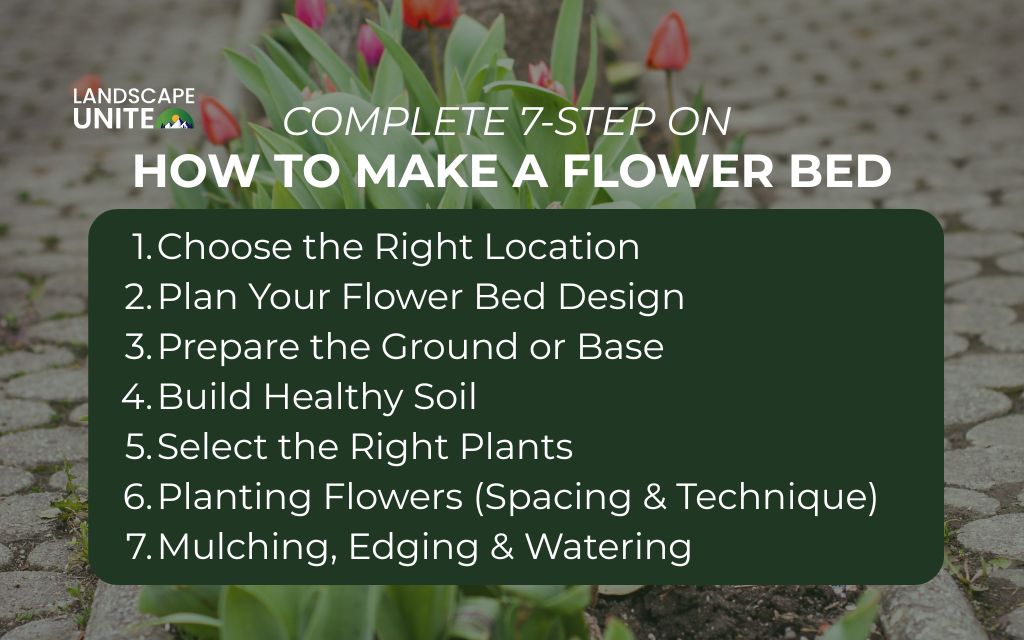
Step 5: Select the right plants for your flower bed
Plant selection makes or breaks your flower bed success. The key is choosing varieties suited to your specific conditions rather than falling in love with plants that won’t thrive in your yard.
Understanding plant categories:
Perennials (return each year):
- Black-eyed Susan: bright yellow blooms, drought-tolerant
- Purple Coneflower: attracts butterflies, low maintenance
- Salvia: long blooming season, comes in many colors
- Daylilies: extremely hardy, variety of colors available
Annuals (plant yearly):
- Marigolds: easy to grow, pest-resistant
- Petunias: continuous blooms, heat-tolerant
- Cosmos: self-seeding, butterfly magnet
- Zinnias: cut flower favorite, drought-tolerant
Ground covers (fill spaces):
- Creeping thyme: fragrant, edible flowers
- Lamb’s ear: silvery foliage, texture contrast
- Veronica: spiky flowers, pollinator favorite
Drought-tolerant options:
- Yarrow: feathery foliage, flat-topped flowers
- Blanketflower: daisy-like blooms, extremely hardy
- Sedum: succulent varieties, fall interest
Design principles for plant selection:
- Mix heights: tall plants in back, short in front
- Combine bloom times: spring, summer, fall flowering plants
- Include foliage plants for texture and color contrast
- Choose plants with similar water and sun needs
Step 6: Master planting techniques
Knowing how to plant flowers in a flower bed correctly ensures strong establishment and healthy growth. Proper technique prevents transplant shock and gives your plants the best start possible.
Pre-planting preparation:
- Water plants thoroughly the day before planting
- Lay out all plants while still in containers to visualize spacing
- Dig all holes before removing plants from containers
Planting technique:
- Dig holes slightly wider than the root ball
- Make holes the same depth as the container (don’t plant too deep)
- Mix compost or worm castings into each planting hole
- Gently tease apart circled roots before planting
- Backfill with amended soil, not pure compost
Spacing guidelines:
- Read plant tags for mature spread information
- Space plants based on mature size, not current size
- Allow room for air circulation to prevent disease
- Consider growth habits (spreading vs. clumping)
Post-planting care:
- Water deeply immediately after planting
- Apply 2-3 inches of mulch around plants (not touching stems)
- Monitor daily for the first week, adjusting water as needed
Step 7: Complete with mulching, edging, and irrigation
The finishing touches transform your planted area into a professional-looking flower bed. These details also reduce maintenance and improve plant health.
Mulching essentials:
- Organic options: Shredded bark, composted leaves, straw
- Inorganic options: Gravel, decorative stone, rubber mulch
- Apply 2-3 inches thick, keeping mulch away from plant stems
- Replenish organic mulches annually as they decompose
Edging for definition:
- Natural edges: Cut clean lines with a spade
- Material options: Stone, brick, metal strips, plastic
- Installation: Bury edging materials halfway for stability
- Maintenance: Re-edge annually to maintain clean lines
Watering systems:
- Hand watering: Most flexible but time-consuming
- Soaker hoses: Efficient, customizable placement
- Drip irrigation: Most water-efficient, automated options available
- Sprinklers: Good for large areas, less water-efficient
Watering best practices:
- Water early morning to reduce evaporation
- Water deeply but less frequently to encourage deep roots
- Adjust frequency seasonally (more in summer, less in spring/fall)
- Monitor soil moisture rather than following rigid schedules
Professional enhancement ideas
Once your basic flower bed is established, consider these upgrades that add visual interest and functionality:
Lighting options:
- Solar pathway lights for evening enjoyment
- LED spotlights to highlight specimen plants
- String lights for ambient garden lighting
Decorative elements:
- Natural stone accents or boulders
- Garden art or sculptures
- Birdbaths or small water features
- Trellises for climbing plants
Pollinator support:
- Include native plants specific to your region
- Plant flowers with different bloom shapes for various pollinators
- Provide water sources like shallow dishes with landing spots
- Avoid pesticides that harm beneficial insects
Seasonal flower bed maintenance
Understanding how to grow a flower bed successfully means staying on top of seasonal care tasks. Regular maintenance prevents problems and keeps your flower bed looking its best.
Spring tasks:
- Remove winter mulch gradually as soil warms
- Divide overcrowded perennials
- Apply fresh compost around established plants
- Begin regular watering schedule
Summer care:
- Deadhead spent blooms to encourage more flowers
- Monitor for pests and diseases
- Maintain consistent watering during hot weather
- Add summer annuals for continuous color
Fall preparation:
- Plant spring-blooming bulbs
- Cut back spent perennials or leave for winter interest
- Apply winter mulch in cold climates
- Collect seeds from favorite plants
Winter protection:
- Cover tender plants in cold regions
- Avoid walking on frozen beds
- Plan next year’s additions and changes
- Order seeds and plants for spring
Troubleshooting common flower bed problems
Even experienced gardeners encounter challenges. Here’s how to handle the most common issues when learning how to build flower beds:
Poor drainage:
- Install French drains for severe problems
- Create raised beds or berms
- Add organic matter to improve soil structure
- Choose plants suited to wet conditions
Pest problems:
- Encourage beneficial insects with diverse plantings
- Use companion planting for natural pest control
- Apply organic treatments when necessary
- Remove affected plants promptly to prevent spread
Uneven growth:
- Check soil pH (most flowers prefer 6.0-7.0)
- Ensure adequate sunlight for all plants
- Adjust watering for individual plant needs
- Test soil for nutrient deficiencies
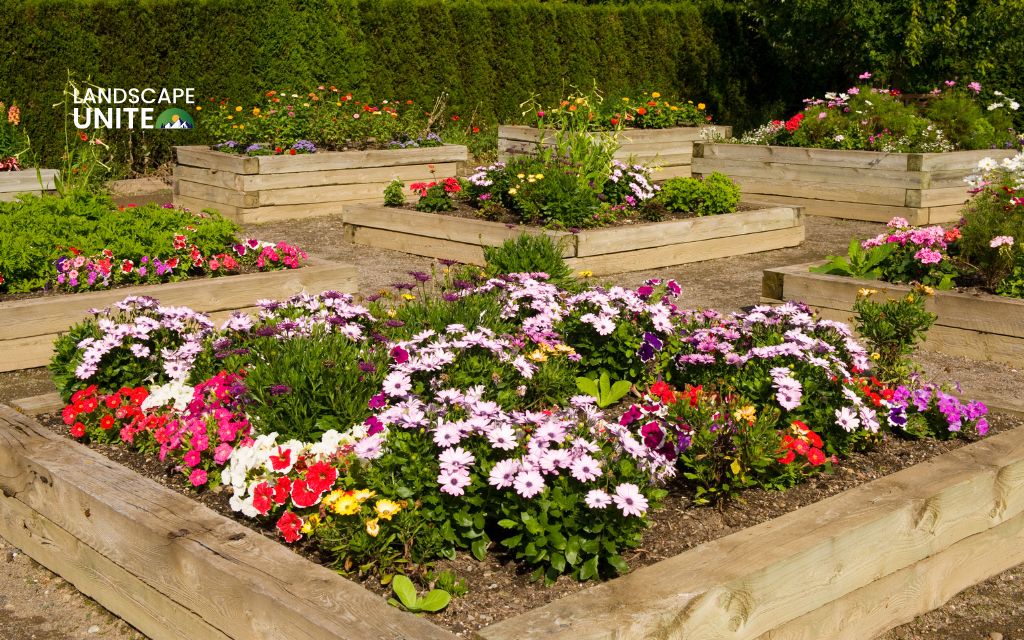
Cost-effective flower bed strategies
Creating beautiful flower beds doesn’t require a huge budget. Smart planning and resourcefulness can dramatically reduce costs:
Money-saving tips:
- Start plants from seeds when possible
- Divide existing perennials for free plants
- Join plant swaps with local gardening groups
- Shop end-of-season sales for next year’s plants
- Propagate cuttings from friends’ gardens
DIY approaches:
- Make your own compost instead of buying bags
- Collect free materials like leaves for mulch
- Build raised beds from reclaimed materials
- Create your own plant markers and labels
For specific pricing on professional landscape design and installation services, we recommend consulting with experts who can provide customized quotes based on your specific needs and preferences. Every project is unique, and costs vary significantly based on size, plant choices, and site conditions.
When to consider professional help
While this guide empowers you to create your own flower bed, some situations benefit from professional expertise:
- Complex projects: Large-scale designs, steep slopes, or drainage issues
- Time constraints: Busy schedules that make DIY impractical
- Specialized knowledge: Native plant gardens or specific ecosystem restoration
- Tool limitations: Projects requiring heavy equipment or specialized tools
If you’re considering professional assistance, research local landscape professionals who specialize in sustainable garden design and can work with your vision and budget.
Conclusion
Learning how to make a flower bed successfully combines planning, preparation, and patience. Start with a small, manageable project and expand your gardening skills over time. Remember that every expert gardener started with their first flower bed, and yours will improve with each season.
The most rewarding gardens grow gradually, reflecting your personal style and learning from both successes and challenges. Whether you’re creating a simple border or an elaborate perennial display, the principles in this guide will help you build a thriving flower bed that brings joy for years to come.
Ready to transform your landscape? Subscribe to the Landscape Unite blog for more expert gardening tips, seasonal care guides, and inspiring design ideas. Discover new posts regularly as we share the latest in sustainable landscaping, plant care, and outdoor living. From Mile High Lifescape’s team of professionals, we’re here to help you create the outdoor space of your dreams.
FAQs about how to make a flower bed
What is the best base for a flower bed?
Well-draining soil mixed with 40% compost and 20% coarse sand or perlite. This combination provides nutrients while preventing waterlogged roots.
What flowers grow best in flower beds?
Choose plants suited to your sunlight conditions. Perennials like coneflowers and black-eyed Susan provide reliable returns, while annuals like marigolds offer continuous blooms.
Can I use drip irrigation for flower beds?
Yes, drip irrigation is highly efficient and reduces water waste. It delivers water directly to root zones and can be automated for consistent care.
How deep should soil be for a flower bed?
Annual flowers need 6-8 inches of quality soil, while perennials require 12-18 inches for their deeper root systems and long-term establishment.
When do I need professional help for flower bed installation?
Consider professionals for complex drainage issues, large-scale projects, steep slopes, or when specialized equipment is required. For detailed consultations and custom solutions, contact qualified landscape professionals in your area.
What is the best way to layout a flower bed?
Use curved edges and layer plants by height with tall varieties in back and shorter ones in front. This creates visual depth and makes maintenance easier.
